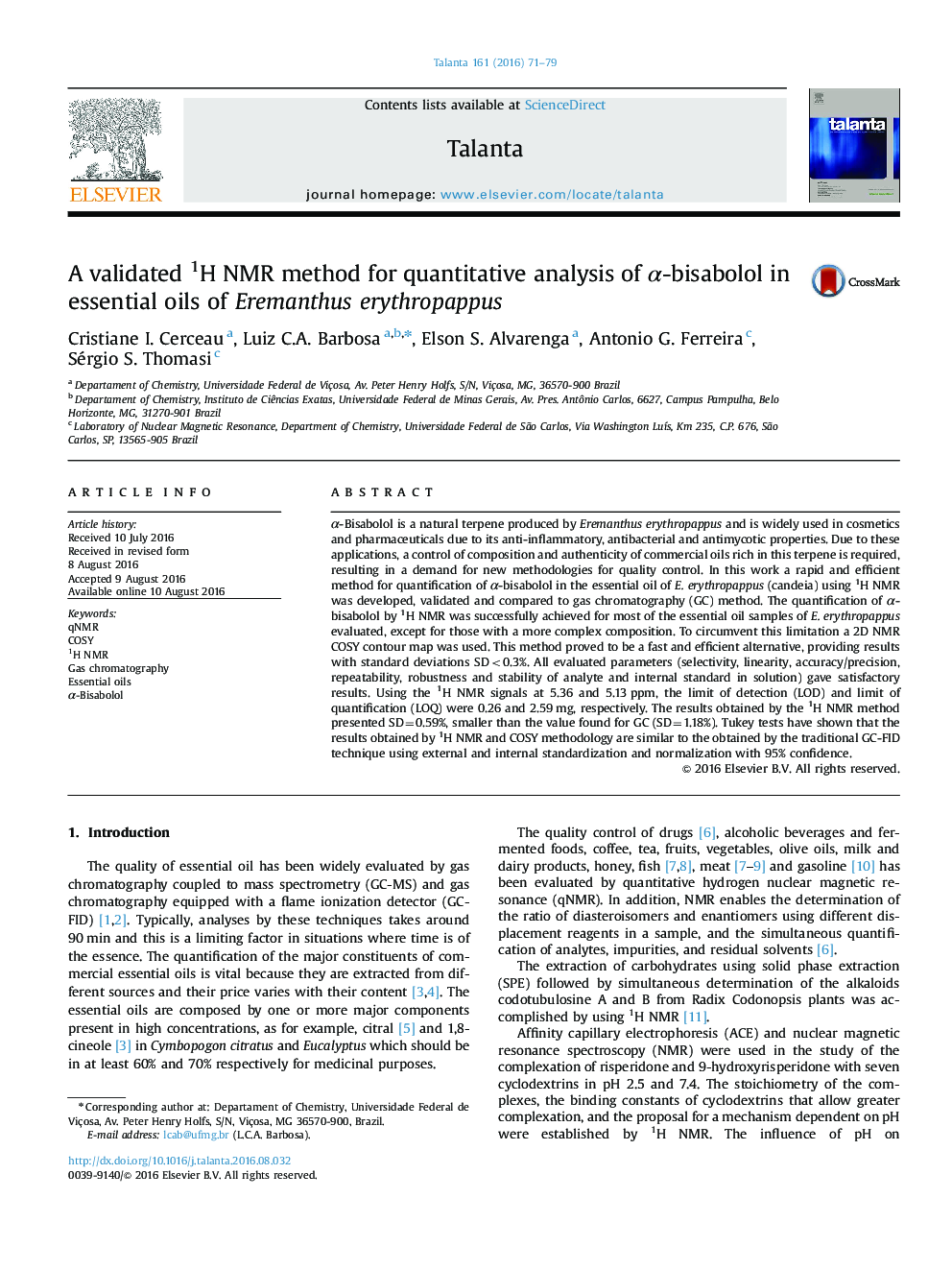| Article ID | Journal | Published Year | Pages | File Type |
|---|---|---|---|---|
| 1241690 | Talanta | 2016 | 9 Pages |
•1H NMR and COSY for quality control of volatile oils of Eremanthus erythropappus.•Quantification of α-bisabolol in essentials oils using 1H NMR and COSY versus GC-FID.•Quality control of α-bisabolol commercial oils by 1H NMR.•A fast method for analysis of α-bisabolol in candeia oils using 1H NMR was developed.
α-Bisabolol is a natural terpene produced by Eremanthus erythropappus and is widely used in cosmetics and pharmaceuticals due to its anti-inflammatory, antibacterial and antimycotic properties. Due to these applications, a control of composition and authenticity of commercial oils rich in this terpene is required, resulting in a demand for new methodologies for quality control. In this work a rapid and efficient method for quantification of α-bisabolol in the essential oil of E. erythropappus (candeia) using 1H NMR was developed, validated and compared to gas chromatography (GC) method. The quantification of α-bisabolol by 1H NMR was successfully achieved for most of the essential oil samples of E. erythropappus evaluated, except for those with a more complex composition. To circumvent this limitation a 2D NMR COSY contour map was used. This method proved to be a fast and efficient alternative, providing results with standard deviations SD<0.3%. All evaluated parameters (selectivity, linearity, accuracy/precision, repeatability, robustness and stability of analyte and internal standard in solution) gave satisfactory results. Using the 1H NMR signals at 5.36 and 5.13 ppm, the limit of detection (LOD) and limit of quantification (LOQ) were 0.26 and 2.59 mg, respectively. The results obtained by the 1H NMR method presented SD=0.59%, smaller than the value found for GC (SD=1.18%). Tukey tests have shown that the results obtained by 1H NMR and COSY methodology are similar to the obtained by the traditional GC-FID technique using external and internal standardization and normalization with 95% confidence.
Graphical abstractFigure optionsDownload full-size imageDownload as PowerPoint slide
